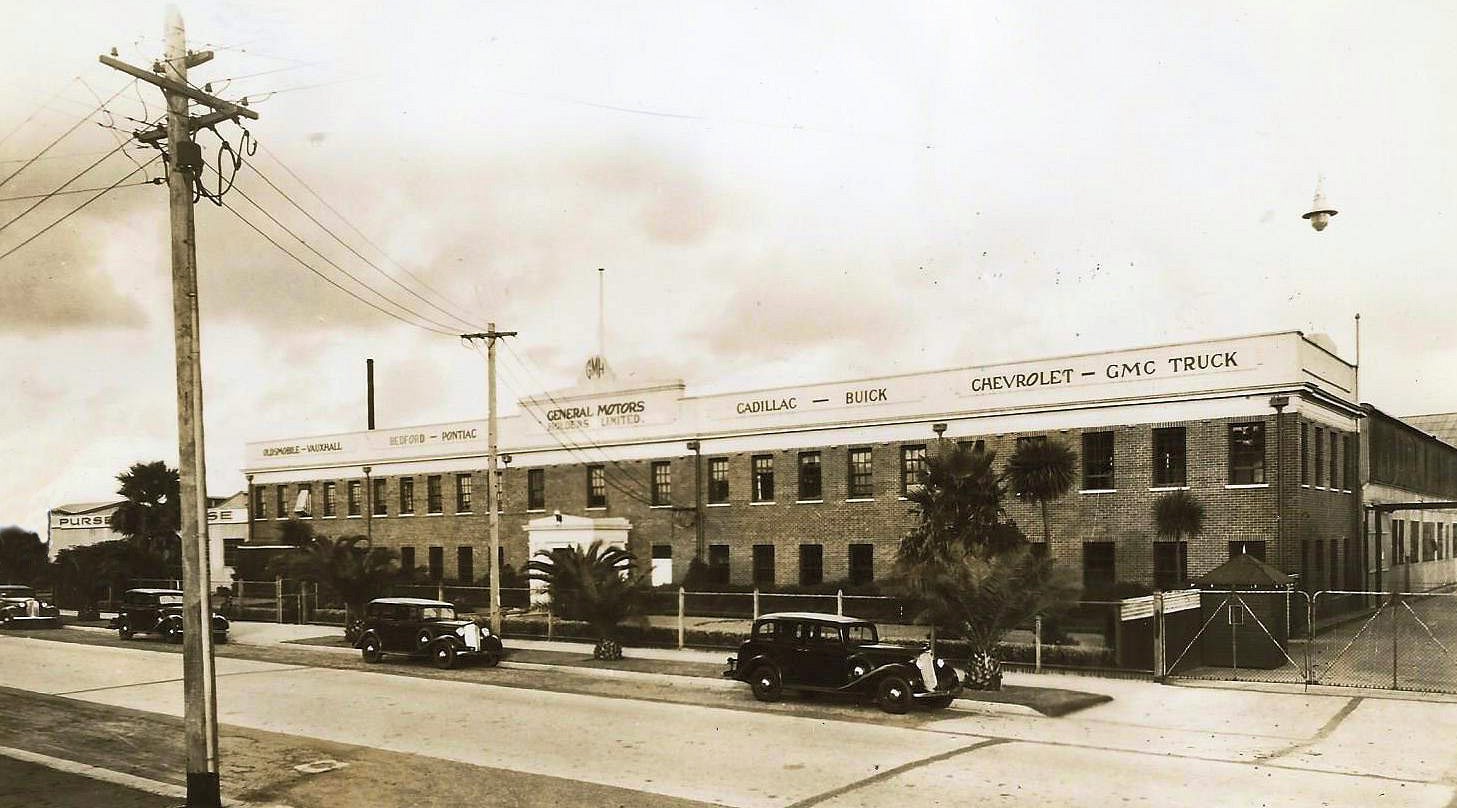Carrington Road’s industrial past (and future?) Save Marrickville is campaigning against a proposed 35-storey residential development along Carrington Road Marrickville which includes the last Australian General Motors factory (listed by the National Trust: picture below), but I have found a much bigger history.
In 1926, the American motor vehicle firm General Motors (Australia) Pty Ltd established assembly plants in Melbourne, Perth, Brisbane, Adelaide and Sydney to produce motor vehicles for the Australian market. Sydney architects Ross and Rowe were commissioned for the Sydney plant (6-10 Carrington Road). The design was to comply with all the conditions of a modern assembly plant and to provide the best possible conditions for all employees, according to GM’s magazine Motor Progress. The NSW Premier, the Hon. JT Lang, opened the factory declaring:
Factories were the milestones along the road Australia must travel to become a self-contained nation whose secondary industries would absorb her primary products . . . there is no market like that created by the employment of local labour . . . and it will be a striking advertisement to the world of this country of ours.

General Motors – Carrington road, Marrickville
General-Motors purchased Holden in 1931 during the Depression (fearing it would be snapped up by a competitor) and continued to operate there until 1939. The factory then produced tyre cord until 1961 after being taken over by Davies Coop, a significant
corporation in the Australian textile industry in the Twentieth Century.
Other businesses were established close to General Motors. AH Peters (16 Carrington Road) made bodies for trucks and utilities including ambulances used all over NSW.
Duly & Hansford (20-28 Carrington Road) made automotive parts including under the Dufor brand. Rega Products took an order for 30,000 pumps from General Motors to be produced from its 1937 Art Deco factory designed by AM Bolot at 47 Carrington Road. Rega Products, Duly & Hansford and Davies Coop all manufactured munitions in World War II. Aircraft equipment and a technical school for the RAAF and United States Air Force were also established by ETC-Tecnico (49 Carrington Road). After the War, Tecnico transitioned to producing electrical goods for the civilian mass market including vacuum cleaners and lawn mowers. Tecnico was aken over by Pye in 1959, and built new headquarters in 1962 conditions. The post-war labour shortage and demand for mass-market goods then provided opportunities for migrants as they established their future in Australia. The current businesses in Carrington Road continue to be part of that story. A nomination for State Heritage listing has been made.
(57 Carrington Road) Not only does Carrington Road showcase industrial design and manufacturing, its workers mirror Australia’s 20th century cultural history. The 1920s motor vehicle industry attracted eager young men (Duly & Hansford was known locally as Boystown for its hiring practices), while women were conscripted to work during WWII often under deplorable.
Author: Louisa Mamuney
